It’s here, in Mar Vista, in our backyard. The Asian citrus psyllid (ACP) has been in found in Los Angeles, but just last week we discovered it on a weak lime tree in the back corner of Gardenerd HQ. Here’s what it looks like in real life.
At first we didn’t see the pest, just evidence that it arrived. Squiggly, white threads were sprinkled over the leaf surfaces and dangled off flower buds. It’s like a horror film where the teenager in a remote cabin notices a note drawn in the steam on the bathroom mirror. Foreboding at best, deadly at worst.

It took a magnifying glass to find the pest (yes, middle-aged eyes will need some assistance here). From the pictures we had seen on CaliforniaCitrusThreat.org we really didn’t get the sense of how small these little buggers are. Here’s a thumb for reference below. You can see one ACP just below the fingernail, and one prominently displaying its hourglass shape standing on the leaf to the right of the one we’re holding.
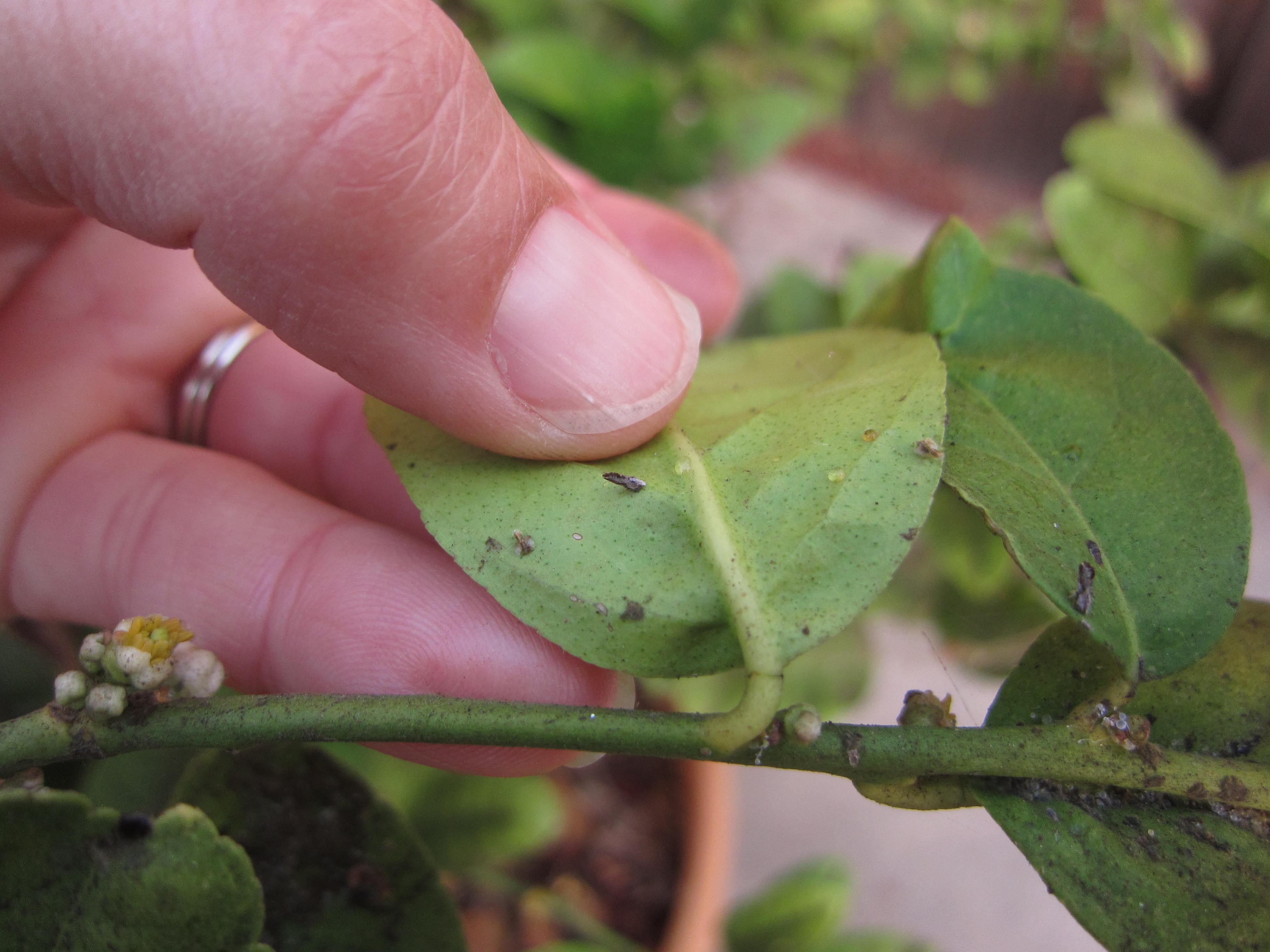
Once we knew what to look for we could see they were clustered in one main section of the tree. They jump sharply away when you touch them if they aren’t attached to the leaf at the mouth-parts.

We immediately began researching the spread of ACP and Huanglongbing (HLB), the fatal disease it carries. This website shows an interactive map of infested areas. It also includes layers of information for where HLB has been detected. Lucky for us, HLB has not yet reached the Los Angeles westside.
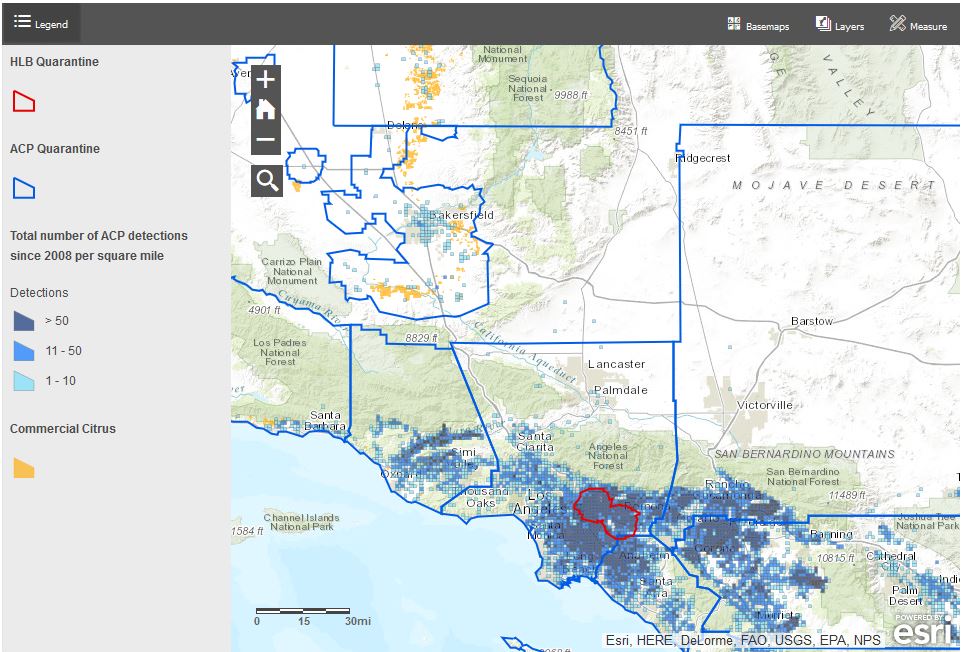
The map also shows where the natural predator of the ACP has been released in hopes of defeating this pest. Tamarixia radiata is a parasitic wasp that makes ACP a host for its young and has the potential for keeping the pest under control.
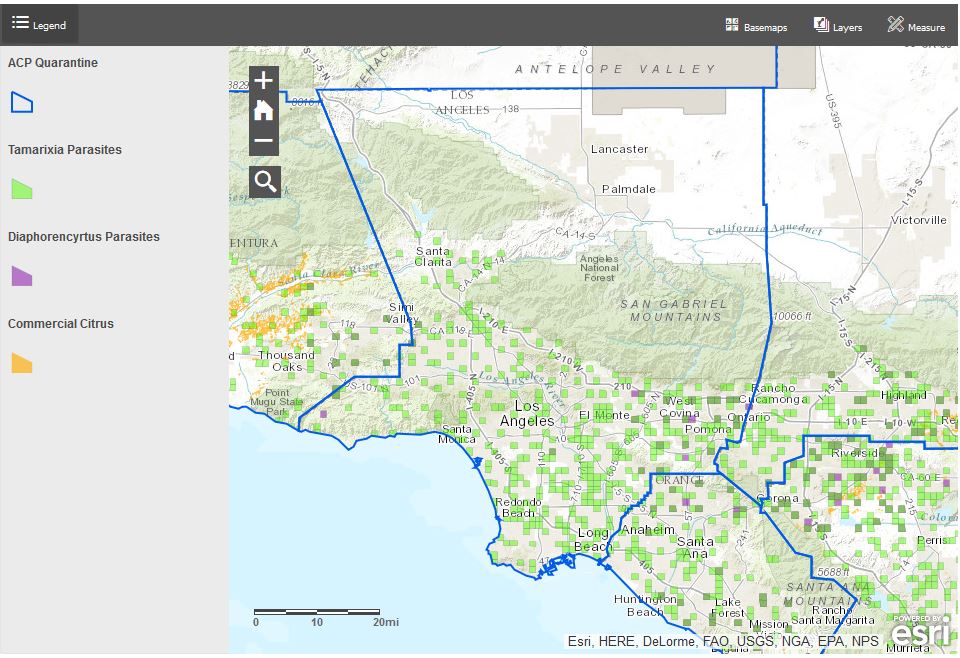
We were delighted to see that the state decided to use a natural biological control rather than attempting to use pesticides to kill the bug. We tried calling the folks at Disease Prevention to ask if we could get our hands on some Tamarixia radiata to release in our backyard. They told us they don’t release upon request.
The map shows that Tamarixia has been released within a few miles of Gardenerd HQ, but we’ll try again to get our hands on the parasitic wasp until we’re covered. In the meantime, we’re ensuring we have plenty of umbels flowering in the yard to attract parasitic wasps. We’ve also applied compost tea to the leaves in hopes that some other microbe has a taste for the exotic. We’ll see.
If you find the ACP on your property, report it right away to 800.491.1899 and take a head count, if you can. If we all do our part, we can help keep HLB contained.

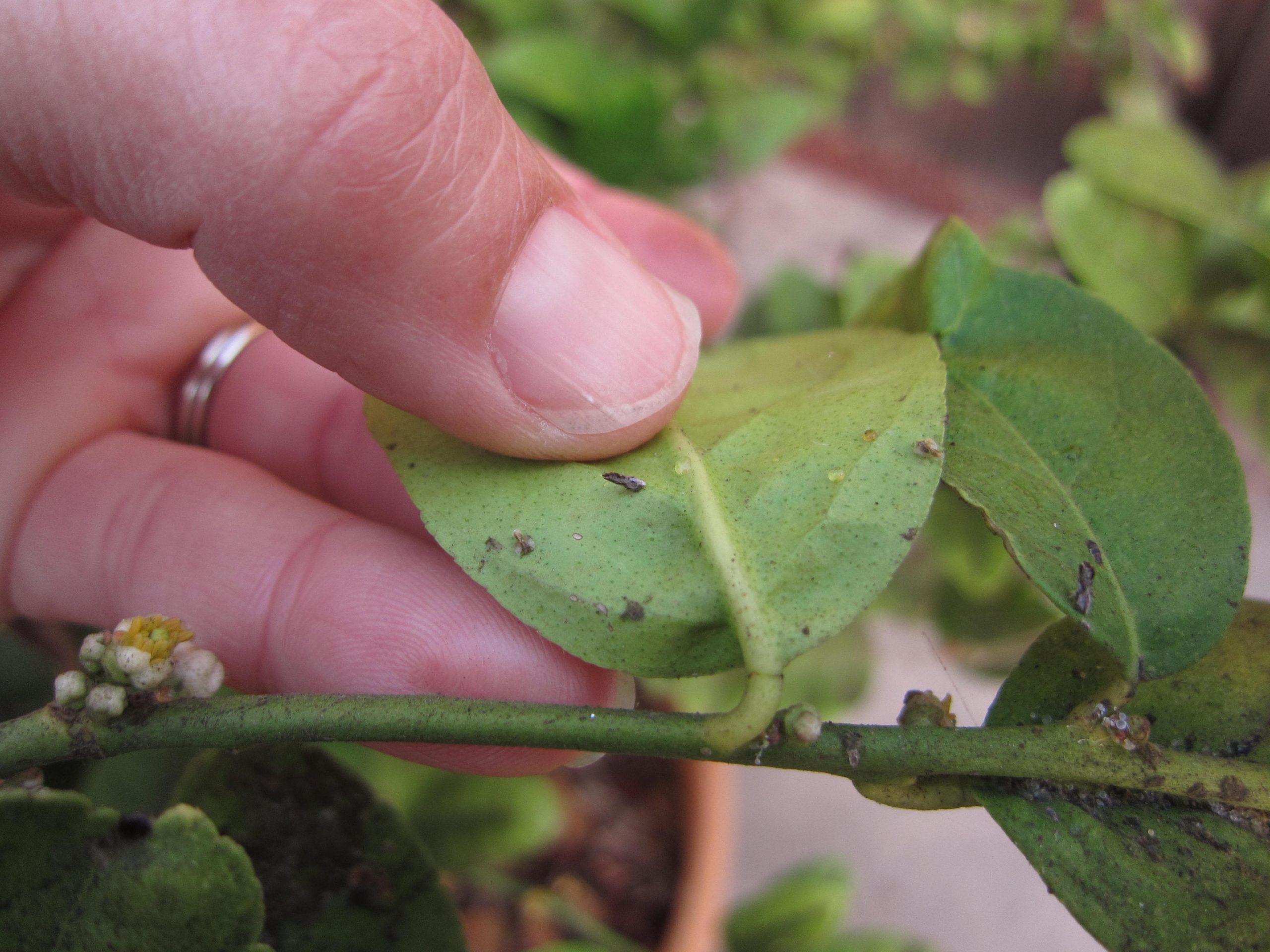
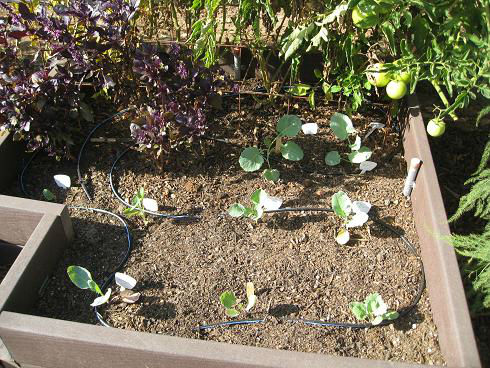
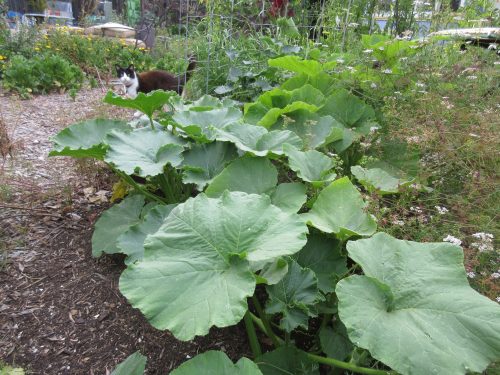
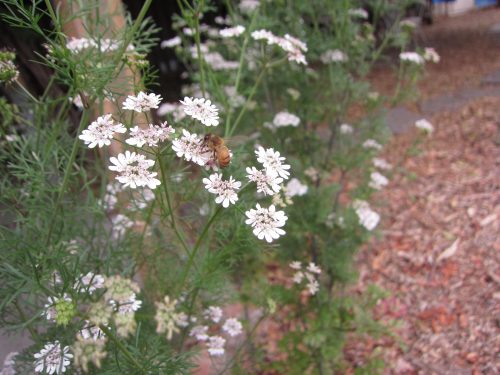
Christy,
its Nathan from the Holy Nativity Community Oven Pizza/Bread-head bake. I was pointed to the presence of the Psyllid in the garden, on the orange tree right behind the Oven! All the hall-mark indicators are visible on the leaves of that orange tree. I took the time to show Dana, Wendy, Paul and whoever else might have been interested. Several others took the time to inspect the trees outside of the oven lot and pronounce them “clean” of any visible markings or presence of the leaf-curling and residue Psyllid on the leaves.
HI Nathan! Yes, I spotted the psyllid on my citrus last year, but that doesn’t mean they are carrying the disease. The map in this blog post has updated info on where HLB has been reported in trees in our area. So far it’s still very low. Mostly south of here. That said, the gardening community is recommending tropical fruit varieties instead of citrus these days.
We have these in Santa Monica also, another member of the GN team found them when checking out my trees.
CA Government recommends use of a tree trunk adhesive like a trunk tape or tanglefoot to help the wasps. The reasoning is that ants will farm the ACPs much like they farm aphids, and will drive off or kill wasps that try to go after them. So, if you block the ants access to the tree, the wasps will get to work.